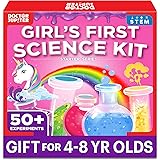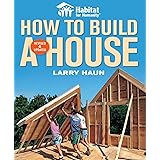Unleash Creativity: Crafting 31 Cute DIY Toys for Endless Fun
The quest for engaging, budget-friendly, and uniquely personal playthings often leads us to the wonderful world of homemade crafts. Above, the video titled “31 CUTE TOYS YOU CAN DIY IN NO TIME” offers a fantastic visual springboard into this creative realm, showcasing numerous possibilities for crafting delightful playthings. This accompanying guide delves deeper into the art of making your own toys, providing context, expanded ideas, and practical tips to help you bring these charming creations to life.
There is a special satisfaction in transforming simple materials into something cherished and playful. Crafting your own toys not only provides a creative outlet but also results in truly one-of-a-kind items. These handmade treasures often hold more sentimental value than their mass-produced counterparts. We embrace the process, the small imperfections, and the unique story each DIY creation tells.
The Magic of Homemade Toys
The appeal of homemade toys extends far beyond their initial creation. When you craft a toy, you infuse it with a piece of yourself, making it special and meaningful. Children especially cherish toys made by loved ones, recognizing the effort and care that went into their construction. This personal connection fosters a deeper bond with the toy and encourages more imaginative play scenarios. Homemade toys also allow for incredible customization, ensuring that each piece perfectly suits its intended recipient or play purpose.
Think about the simple charm of a felt puppet or a cardboard castle; these items spark endless hours of imaginative play. They invite children to create their own narratives, fostering cognitive and social development. The act of making these **DIY cute toys** is a rewarding experience in itself. It connects us to a simpler time when creativity and resourcefulness were paramount in children’s play.
Why Choose DIY Toys? Benefits Beyond the Playtime
Choosing to make your own toys offers a multitude of advantages that go beyond merely having a new plaything. This approach enriches the lives of both the creator and the child who plays with the finished product. Homemade toys are often safer, more sustainable, and promote unique forms of engagement. Here are just a few compelling reasons to embrace the DIY toy movement.
-
Fostering Creativity and Skill Development
First, consider the incredible boost to creativity. For the maker, it’s an exercise in problem-solving and artistic expression, turning abstract ideas into tangible objects. For children, DIY toys encourage open-ended play, allowing them to dictate the story and function, rather than being limited by prescriptive, store-bought options. This enhances their cognitive flexibility and imaginative capacities.
Furthermore, the process of making these items can be a wonderful shared activity, teaching children valuable fine motor skills and patience. Cutting, gluing, painting, and sewing all contribute to developing dexterity and hand-eye coordination. They learn about different materials and how they can be manipulated. These hands-on experiences are invaluable for young minds.
-
Budget-Friendly Fun
Next, explore the significant cost savings involved in crafting your own toys. Many **DIY cute toys** can be made from materials you already have around the house, like cardboard boxes, old socks, fabric scraps, or empty plastic bottles. This dramatically reduces the expense compared to purchasing new toys, especially when aiming for a collection like the 31 unique items mentioned in the video.
This approach allows you to stretch your budget further while still providing a wealth of play opportunities. It’s a smart way to manage household expenses without compromising on quality or fun. You can create a diverse toy collection without breaking the bank, which is a major advantage for families.
-
Environmental Consciousness and Sustainability
Thirdly, think about the positive environmental impact of upcycling materials for your crafts. Repurposing items like toilet paper rolls, egg cartons, or old clothes keeps them out of landfills and gives them a second life. This teaches children about sustainability and the importance of reducing waste from a young age.
By consciously choosing to use existing resources, you contribute to a more sustainable lifestyle. It’s an effective way to minimize your carbon footprint while engaging in a rewarding activity. Every handmade toy from reclaimed materials is a small victory for the planet.
-
Personal Touch and Bonding
Finally, making toys offers a unique opportunity for personalization and bonding. You can tailor each toy to a child’s specific interests, favorite colors, or even create characters resembling family members or pets. This level of customization is impossible to find in stores and makes the gift truly special.
Engaging in the crafting process together fosters quality time and creates lasting memories. Parents, guardians, or even older siblings can work alongside younger children, sharing skills and stories. These shared experiences deepen relationships and make the resulting toys even more meaningful.
Getting Started: Essential Supplies for Your DIY Toy Adventure
Embarking on your DIY toy-making journey doesn’t require a hefty investment in specialized tools or materials. Many essential items are likely already in your home, waiting to be transformed. The key is to see everyday objects with new eyes, recognizing their potential as building blocks for creative projects. Start by gathering a basic craft kit, then supplement it with repurposed household items for truly unique results.
Consider a core set of craft supplies as your foundation. This might include safety scissors, child-safe glue (PVA or craft glue), various colors of felt sheets, yarn, and construction paper. Expand this with drawing tools like markers, crayons, or colored pencils. These versatile items form the backbone of countless projects, allowing for immediate creativity.
Next, look around for items to upcycle. Cardboard boxes of all sizes are invaluable for building structures, vehicles, or puppet theaters. Empty toilet paper or paper towel rolls can become anything from binoculars to miniature figures. Fabric scraps from old clothes, buttons, and bottle caps add texture and detail. Even natural elements like pebbles or small sticks can be incorporated into imaginative play, becoming decorative elements or characters.
Beyond the Basics: Creative Ideas for Your 31 Cute DIY Toys
With a little imagination and some basic supplies, you can create a diverse array of **DIY cute toys** that rival anything found in a store. The video above provides a glimpse into 31 such possibilities, but let’s consider broader categories and concrete examples to spark your own ingenuity. Focus on simplicity and open-ended design to maximize play value. Remember, the goal is not perfection, but the joy of creation and play.
-
Soft & Cuddly Creatures
Craft charming felt animals or friendly sock puppets. You only need an old sock, some felt scraps for eyes and features, and a bit of yarn for hair. Sew or glue the pieces together, and you have an instant character for storytelling. Small fabric scraps can also be stuffed to create simple plushies, offering a comforting presence during playtime. These soft creations are perfect for younger children.
-
Action & Adventure Props
Transform cardboard into majestic swords, sturdy shields, or even miniature vehicles. A large cardboard box can become a fantastic car, spaceship, or house for imaginative role-play. Craft sticks are excellent for building small catapults or simple flying machines. These props encourage active play and allow children to immerse themselves fully in their adventurous scenarios.
-
Educational & Sensory Toys
Create homemade puzzles by gluing a picture onto cardboard and cutting it into unique shapes. Fill clear plastic bottles with water, glitter, beads, and food coloring to make mesmerizing sensory bottles. Develop texture boards using different fabric swatches, sandpaper, and cotton balls for tactile exploration. These toys stimulate different senses and aid in cognitive development, making learning fun and engaging.
-
Miniature Worlds & Dioramas
Use shoeboxes to construct intricate miniature worlds, like a fairy garden, a bustling city street, or an alien planet. Clothespins can be decorated to become dolls or tiny animals, populating these imaginative landscapes. Painted rocks can transform into beloved pets, fantastical creatures, or even story stones for narrative prompts. These projects foster creativity and fine motor skills as children design and build their own small universes.
Inspiring Imaginative Play with Your Handmade Creations
The true magic of **DIY cute toys** lies in their power to ignite a child’s imagination. Unlike many mass-market toys that come with predefined functions, homemade creations often invite open-ended play. This lack of prescription encourages children to invent their own rules, stories, and scenarios, fostering crucial developmental skills. They become the directors of their own play, limited only by their creativity.
Handmade toys can serve as blank canvases for children’s minds. A simple wooden block can be a car, a phone, or a piece of food, adapting to the current narrative. This flexibility allows children to practice problem-solving, build narrative skills, and develop their emotional intelligence as they act out various roles and situations. These experiences are invaluable for holistic growth.
When children engage with handmade toys, they often develop a deeper connection to their play. They understand that these objects were made with care and intention, inspiring them to treat them with greater respect. Furthermore, the uniqueness of each DIY toy can spark truly original ideas, leading to more diverse and engaging play experiences than with identical store-bought items. Encourage them to be the kings and queens of their own creative worlds.
Making the Most of Your DIY Toy Projects
To truly maximize the enjoyment and benefits of creating **DIY cute toys**, a few practical considerations can make all the difference. Remember, the journey is just as important as the destination when it comes to crafting. Focus on creating a positive and safe environment for all participants. These tips will help ensure your crafting adventures are successful and rewarding.
-
Involve the Kids
Actively involve children in the planning and making process. Letting them choose materials, design elements, or even just help with simple steps like gluing or painting empowers them. This fosters a sense of ownership and pride in the finished product. They gain valuable insights into how things are made and appreciate the effort.
-
Embrace Imperfections
Resist the urge for perfection. Handmade items are beautiful precisely because of their unique qualities and occasional quirks. Teach children that small mistakes are part of the creative process and often add character to the finished toy. This encourages resilience and a relaxed approach to crafting.
-
Prioritize Safety
Always consider safety, especially when making toys for younger children. Ensure all materials are non-toxic and that there are no small parts that could pose a choking hazard. Smooth any rough edges and use durable construction methods to prevent easy breakage. Child-friendly tools and supervision are always recommended.







